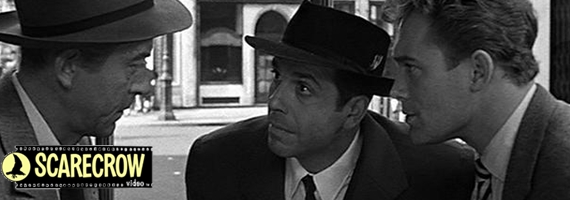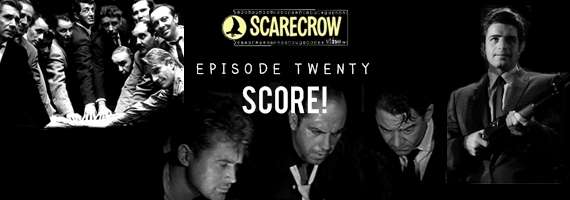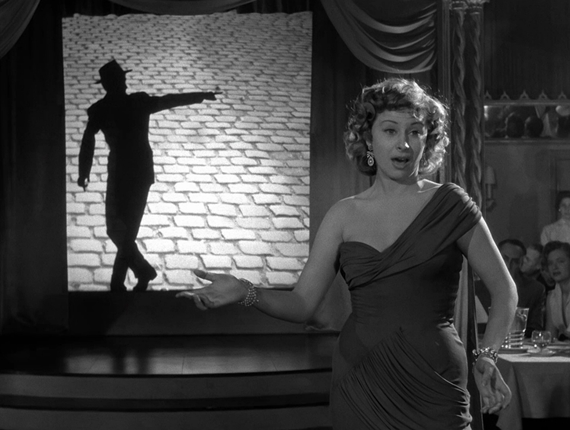
I decided to challenge myself and really open the doors of my film knowledge and take on “The Scarecrow Video Movie Guide”. It’s 808 pages of movies and movie reviews from some of the most knowledgeable movie people you don’t know. It’s a book put together by a staff that praises, and destroys, some of our favorites and not so favorites. You can read the rest of my series here.
Just a quick refresher: each episode, I’m going to tackle three films from three different categories. Two films will be films I’ve never seen before and one will be one I’ve seen before or own. For the new films, well, new to me, I’m going to review them like a typical FTS review using the TOAST Rating system. But, for the films I’ve seen, I’m going give a quick paragraph or two about why I like or don’t like the film. We’ll try to include the poster and trailer for each film. “….and here. We. Go!”

In this episode of Versus The Scarecrow, I take a look at films that center around a big score. Say the words “Heist Film” and I’m in. I don’t care how many people are stealing what from where, just give me an intricate plan, stifling amounts of tension, a few twists, and I’m happier than a clam at high tide. I review Stanley Kubrick’s The Killing, the French noir classic Rififi, and reflect on the original Ocean’s 11, all the while being disappointed that I’ll never get to be in a heist.

Rififi (1955) Directed by Jules Dassin. Starring: Jean Servais, Carl Möhner, Robert Manuel. IMDB says: “Four men plan a technically perfect crime, but the human element intervenes…”
“There’s not a safe that can resist Cesar and not a woman that Cesar can resist.”
Rififi in french means ‘rough and tumble’. While there isn’t much roughing and tumbling going on, there is plenty of tenion. What adds to the tension is a lack of music. Usually, when the main characters are breaking into a safe or chasing after someone, you hear music. It sets the tone and establishes how you should feel. Rififi does a masterful job of taking that away and allowing the natural sounds to resonate and build your own level of tension.
The film centers around Tony le Stephanois (Jean Servais) who just got out of prison after a five year sentence. He’s ready for the next score cause he’s tired of living without money. Tony and three others plan the perfect crime, and end up stealing 240 million dollars worth of diamond jewelry. What feels like the perfect crime, quickly deteriorates after little mistakes are made here and there, leading to a kidnapping and a ransom! The performances are great, allowing you to connect with the characters, but not get too involved because, well, they are criminals. And as I mentioned earier, the lack of music during important scenes, really drives home and pulls you in as you watch for nearly 30 minutes as the crew breaks into a jewelry store in a brilliant way. What seperates this film from other heist films, is the third act. Typically, the main characters are chased by an antagonist of some sort, one character dies, and the rest make off with the money or don’t. All of that happens in twenty minutes or less and then roll credits. Rififi gives you almost another hour of thrilling tension as the group begins to fall apart, a third party begins to track them down, and it all comes to a second climax with a ransom and kidnapping. It’s more than enough to draw you into a film that reminds us, as only the French can, that life never has a happy ending.
Again, I recommend this film to those who enjoy heist films, but if you’re not a fan of subtitles, you may want to pass on this film. It’s dialogue heavy, and if you’re not paying attention in the beginning, you will end up lost. You can find this film through Netflix or the Criterion Collection.


